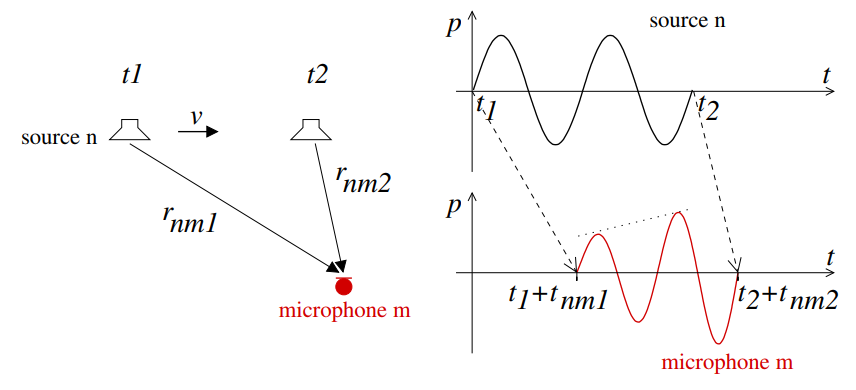The Doppler effect is an acoustic phenomenon which occurs when the distance between sound source and receiver is changed by motion.
With regards to measurements with a moving object and a fixed microphone array, this implies an unconstant distance \(r_{nm}\) from point \(n\) to microphone \(m\). Hence, the runtime for acoustic signals \(\Delta t_{nm}\) becomes time-dependent. In this context, the index \(n=1,\dots,N\) denotes a possible source point on the measured object while \(m=1,\dots,M\) indexes the microphone.
Point \(n\) moves with a velocity \(v\) and is located at a distance \(r_{nm,1}\) from microphone \(m\) at the time \(t_i=t_1\). It changes its distance to the receiver to \(r_{nm,2}\) at the time \(t_2\). Thus, the signal emitted at these two instants of time will reach the receiver \(m\) with a time delay \(\Delta t_{nm,1}\) and \(\Delta t_{nm,2}\). However, due to the motion of the measured object, \(t_2-t_1\neq(t_2+\Delta t_{nm,2})-(t_1-\Delta t_{nm,1})\). This results in a difference in frequency and temporal changes of the amplitude between the emitted and the received signal. The derivation of these modifications which characterize the Doppler effect is shown in Fig. 1.

